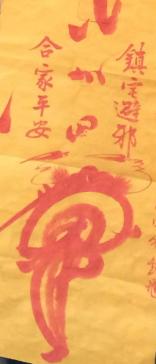A Chinese “rhapsody” 賦 is a long poetic form meant to “set forth / present” 賦 all aspects of a subject. The Daoist priest Wu Yün’s 吳筠 (d. 778)’s rhapsody on the “darkling” (black and mysterious) gibbon does this, incorporating traditional tropes on the animal as well as the results of his own observations. Wu’s “sightings” occurred while the poet was in reclusion on Mount Lu 廬山 during a period of political upheaval. In this poem, Wu did not overtly depart from the tradition of writing about animals as metaphors for human types. A careful reading reveals, however, that Wu wrote of himself as gibbon. My project thus explores the way that the perceived body of the gibbon suggests to the poet postures, emotions, attitudes and responses that would, he hoped, guide him through his current predicament. In closing the chasm between animality and the human, I want to show, Wu Yün draws selectively on elements of traditional gibbon lore, but also takes seriously the cosmology of religious Daoism as it began to develop new regimes of understanding concerning the natural world.

Daoist Talisman with Animal Figure, Mao Shan 2015
Project
(2019)
